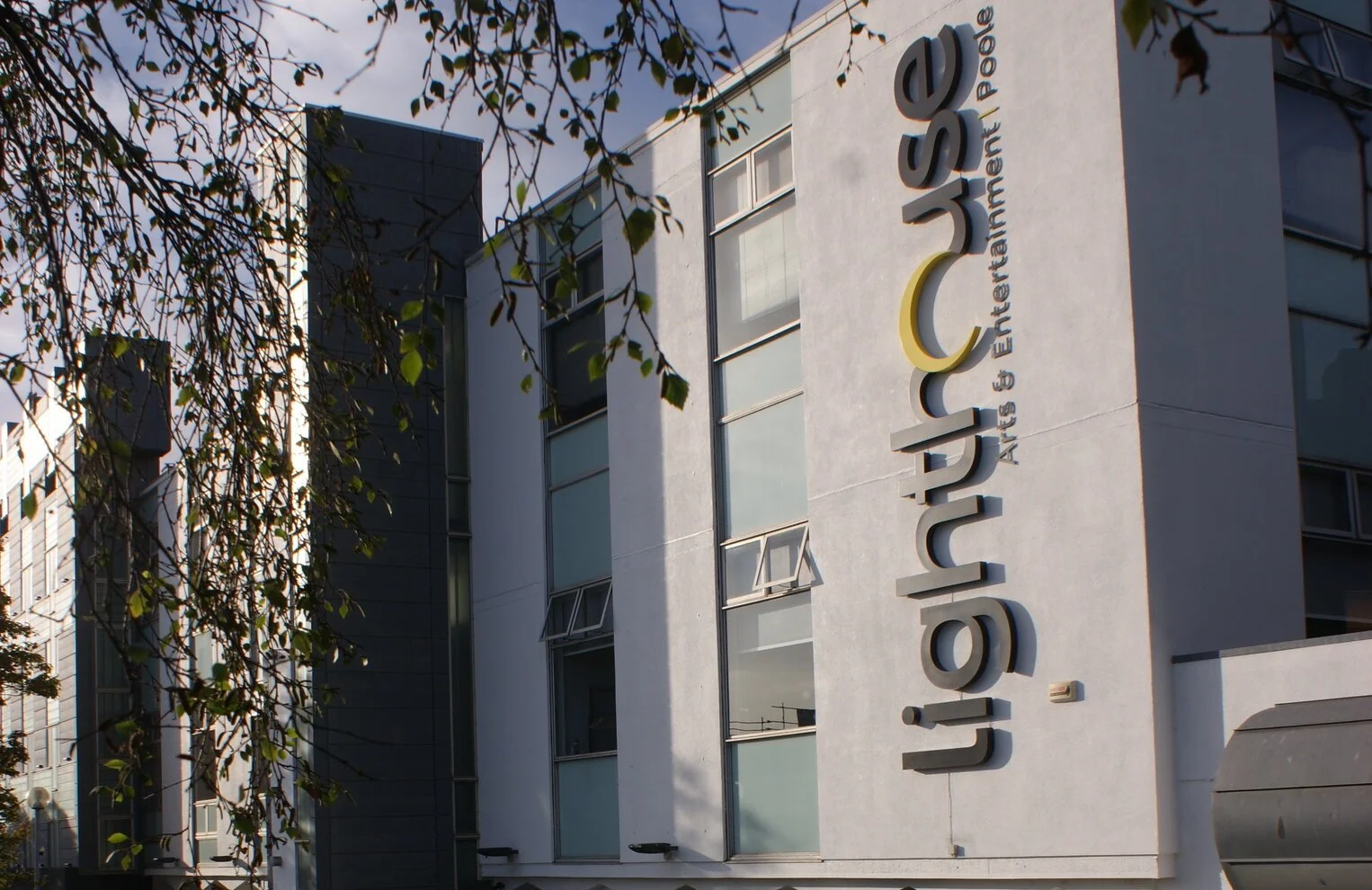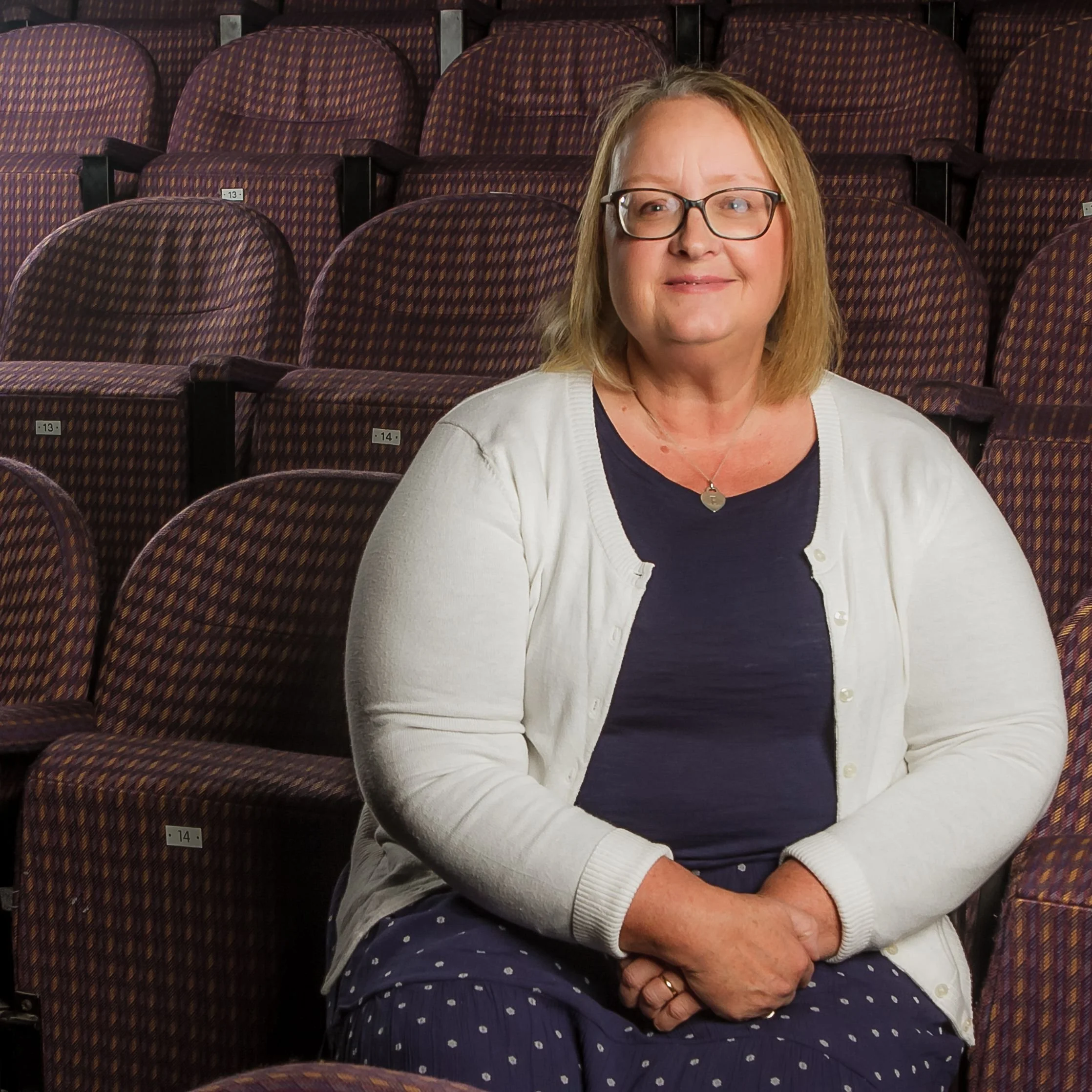Spotlight on… LIGHTHOUSE POOLE
Lighthouse Poole in Dorset lays claim to being the largest Arts Centre in England outside of London and therefore provides an extensive range of facilities to serve its local communities. The building includes a 669-seat theatre, a modern 103-seat cinema, 1500-seat symphonic concert hall, a 130-seat studio, a large gallery for photography and art, a cafe/bistro, three bars and four function rooms. The concert hall is home to Bournemouth Symphony Orchestra. This, of course, means that it has a large overheads to maintain and programme this range of services and needs the support of its community, funders and creatives to operate successfully.
Poole Arts Trust - who operate the facility - have stated three aims that, if delivered together, underpin its success. To deliver financial resilience, to support artists and workforce in the community to develop talents in the creative sector, and to offer an accessible, broad and diverse cultural programme for community. Covid disrupted the smooth running but there are very positive signs that the strategies are enabling it to recover, despite the significant rise in the costs of operation. Classical music audiences are now returning but the financial risk of drama and dance presentations and lower cinema audiences remain a challenge in offering a full range of programming.
Poole Arts Centre originally opened in April 1978. In May 2002, an £8.5 million radical refurbishment and overhaul was undertaken. This was paid for by Arts Council Lottery Awards, the Borough of Poole and through private donations. It reopened as Lighthouse, Poole's Centre for the Arts in October 2002. A further £5m capital project in 2016 saw backstage areas and building infrastructure updated.
Lighthouse provides a year-round programme of high quality and diverse arts and entertainment from national, international, and regional artists, providing their community with opportunities to engage in a broad range of arts activities and experiences. Primarily, it operates as a receiving venue with roughly 80% of visiting activity and proudly works to deliver something “different every day”.
CEO Elspeth Bain summed the challenge up: “The value of regional theatres to the local communities as a meeting place, entertainment venue and tourism driver is critical to local economies and needs to be supported by local authorities, trusts and foundations, and the general public if they are to survive, let alone flourish. We operate in partnership with the Arts Council, the local authority, producers and nationally important companies, our resident orchestra and our audiences to deliver a varied programme on a sustainable basis. It is vital to maintain a dialogue with these partners to reinforce the value of culture to our community and region and ensure that together, we can continue to deliver across the full range of our programming.”
In the financial year to March 2023, they delivered 487 performances, 520 screenings and 100 rehearsals and recordings, and won the Best Business Events award at Southwest Tourism Awards 2023. 80% of their income was earned through activity with an average ticket price of £20.98. The recent budget will add to the financial challenges ahead with the significant rise in minimum wage having a knock on throughout the staff payroll and the addition of extra National Insurance cost. The inevitable result will be higher ticket prices and the likelihood of lower annual pay awards. Further costs will be added by Martyn’s Law as it is enacted into the Protection of Premises Act requiring investment in CCTV, barriers and external inspections .
The engagement of the younger community is driven by a range of activities including The Sanctuary artist’s development programme and The Lighthouse Academy. In year to March 2023, they delivered 711 sessions for 17812 participants aged 0 -19 and issued 5245 schools’ tickets. The Community Outreach programme is a core initiative to grow audiences and serve its community, and Elspeth emphasised its importance. “The reduction in the arts curriculum has created a cultural desert in schools which we seek to fill with the support of the Arts Council to interest young people in the Arts as a career or as a regular part of their lives.”
Another key element of connection with the community is through its annual pantomime. Chris Jarvis once again returns in December to write, direct and star in the theatre’s annual in-house pantomime with Sleeping Beauty, alongside Todd Carty. Last year’s fresh take on Aladdin reset the traditional tale on the local Jurassic coast, connecting it to the local community earning the Benjamin Armstrong Best Newcomer Award. The 2023 production of Cinderella, set in a hotel in Poole, earned three nominations from the prestigious UK Pantomime Awards for Best Ugly Sisters, Best Mystical Being and Best Panto, with Andrew Pollard and Alim Jadavji winning the Best Sisters’ award . Chris Jarvis was himself a winner in 2019. This year’s production is again based firmly in the community and runs from 12 December 2024 to 5 January 2025.
Chris Jarvis summed up why the pantomime in Poole is so special: ”Everyone in the building gets involved in the panto; stage door, stewards, bar staff, crew, management… noone escapes! It’s the biggest and only long running in-house production of the year and everyone seems to love it; either that or they’re better actors than us!
“There are several professional shows a short drive away as well as many good amateur productions, so our challenge is to create a spectacular panto that is distinctive as well as competitive. Years ago, when I was in panto’s at the Pavilion in Bournemouth, we used to love visiting Lighthouse to see something quite different to ours. Those Michael Rose productions were warm, quirky with high production values, we aim to deliver the same standards today with a focus on good storytelling and comedy as well as song and dance, and lots of local references.
“Lighthouse is well-equipped, well maintained and there’s not a bad seat in the house when it comes to comfort and airiness… eight litres of fresh air per person per second! Sightlines are also spot on – for both viewer and performer. So, for any aged panto-goer but particularly young families, this theatre is a perfect house of fun for panto."
The impact on a large complex building like Poole Lighthouse of rising costs remains a significant challenge and with 40% of their audience traveling to the area to visit the desire to reduce its carbon footprint and improve its cost efficiency requires investment. Elspeth Bain told us: “ In the longer term the drive to Carbon Neutral operations will need government support even for relatively modern buildings like Lighthouse as investment payback from such initiatives as alternative power sources and wall insulation is too long to enable investment or attract commercial loans without grants. A government policy statement for the theatre sector toward net zero carbon footprints is urgently needed. This is essential to create financially sustainable venues without which there would be a huge detrimental effect on the local community and economy”.
As with so many regional venues, the challenges of programming a year-round offer to the community, developing the audience and access through pricing and engagement, and balancing the books is likely to remain a constant in the coming years. The support of the Arts Council , the local authorities and local business and donors is essential to enable to the venue to take risks in its programming and reach out into the community, but the case is strong for both economic and social benefits for that community. Poole Lighthouse looks well placed to navigate though these challenges as it heads to its 50th anniversary in 2028.
Nick Wayne
Nick has been involved in Producer and Venue Organisations for twenty-five years, seen over 1200 productions, visited over 160 of the UK Venues and invested in over 30 West End Productions.



